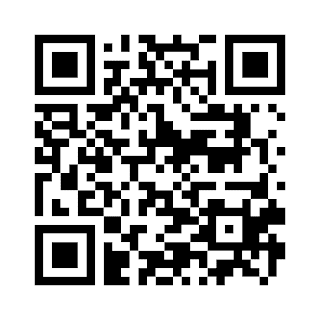Apply the concept of
Narrative to one of your coursework productions. (25 Marks)
For my AS coursework, I produced a three minute moving image sequence
that was to be representative of a segment from a potential film. I can apply
the concept of narrative to this particular product through various
interpretations echoed by theorists and their respective theories. Narrative is
defined by the way that a story is told and the way that meaning is constructed
to enhance and achieve the understanding of relevant audiences.
Tzvetan Todorov (1969) theorised that all narratives have a three-part
structure: equilibrium in the state of normality, disequilibrium and a
resolution or a new equilibrium. The way in which I can apply this theory to my
short film opening is that through a tilted camera shot, I established serene
equilibrium or what would be perceived as a “normal” environment of my
protagonist daintily walking through a street. A slow tilt camera angle creates
an atmosphere of calmness and reiterates to the audience that equilibrium has
been established. As my sequence progressed, I focused on creating a disruption
in the narrative that subsequently added the element of suspense and concluded
with a dramatic climax. This was captured through quick-cut editing in an
environment that had low-key lighting, which in turn maintained and sustained a
level of intense suspense.
Aside from following the three-part structure of Todorov, Vladimir
Propp (1928) coined the theory of ‘Character Functions’ within a set narrative.
He observed that narratives are almost entirely shaped and developed by certain
characters and specific actions that unfold in order to pursue a narrative. Within
my AS coursework, I adopted two of Propp’s character roles: the villain and the
“damsel”. Personally, my protagonist who, according to Propp’s theory, assumes
the role of the “Princess” doesn’t entirely conform to specific characteristics
as outlined by an archetypal Princess character – she is more of a character
who, based on the storyline, is someone that is randomly selected. My
overarching storyline within my AS opening is that a seemingly innocent girl is
attacked by a supernatural entity, only to find out that her family and her
heritage holds a certain gene that makes it impossible for her to ever become
mortal again. Thus, I can’t really apply the label of “Princess” to her
character, as I have constructed my film opening so that it is riddled with
narrative enigmas.
On the other hand, the antagonist (the supernatural entity),
successfully acts as a villain; satisfying Propp’s character function. However,
even though I had Propp’s Theory in mind when creating my film opening, I
wanted to subvert an element of the theory by deconstructing any previously
existing stereotypes of a villain, and eventually transformed the antagonist
into a sympathetic character. The sincerity and change of character was
evidenced through extreme close up camera shots that were edited slowly, which
then captured a notable change of tone in the antagonists voice – therefore
deconstructing any negatively held views about the supernatural. To further
justify and to provide a visual contrast, the opening shots of the antagonist
were shot with the intention to build up a malevolent and ruthless character;
done by an establishing shot and a transition into rapid quick-cut shots that
showed the gruesome transformation of the antagonist’s physicality. In
accordance to one of Propp’s 31 Character Functions, the villain injures and
attacks the protagonist, however, this would be the only distinctive link that
I could make to the theory, as Propp’s Theory follows suit to the “Folk Tales”
that he studied during 1928, whereas my AS sequence follows suit to that of a
modernised text and doesn’t fully include the other Character Functions.
My AS opening sequence is also based on the principle of Levi-Strauss’
Binary Opposites Theory. To put it simply, the sequence is heavily based upon
the conflict between the notions of “Good versus Evil”. As the aforementioned
states, there are two sole characters within my coursework: the protagonist and
the antagonist. I have constructed the antagonist to embody the archetypal
features and characteristics associated with ruthless supernatural entities. This
was executed through wide angled camera shots that were compiled together in a
quickly edited fashion as to emphasise the unrelenting determination to attack
the female protagonist. Ergo, the antagonist is the embodiment of what
audiences would consider being an “evil” character. In comparison, the female
protagonist is depicted as the innocent, lone wanderer in the streets. Her
nonchalance and general “aesthetic” was constructed with the intention to
convey her to audiences as being “pure” and an “unlikely target”. This is
evidenced through various wide angled camera shots, as well as a camera tilt
that unintentionally objectifies her (this is in accordance with Laura Mulvey’s
‘Male Gaze Theory’). These camera angles capture what the protagonist wears and
in order to emphasise her purity and innocence, I dressed her in white
clothing, which typically connotes “the pure” and the “divine”.
To surmise, my moving image sequence entails theories that conform to
the general ideologies of different narratives. Whilst I considered narratives,
I also focused on subverting traditional expectations that audiences would typically
expect as outlined by a rigid narrative structure – hence my deviation from
typical characteristics that stock characters would usually embody.


 I found reviews from Rolling Stone, Brighton's Finest, "Noisey" and Independent Music News (IMN). All of the reviews that I have compiled together reflect the success of the band and highlights the further success that they will encounter as they branch out further into the music industry.
I found reviews from Rolling Stone, Brighton's Finest, "Noisey" and Independent Music News (IMN). All of the reviews that I have compiled together reflect the success of the band and highlights the further success that they will encounter as they branch out further into the music industry.




